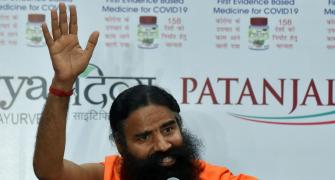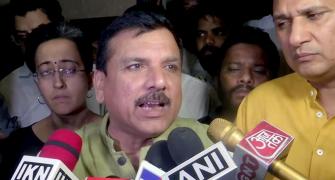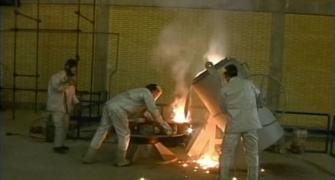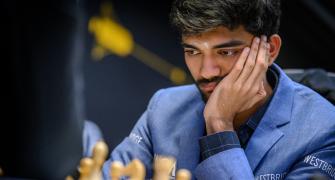Given how the armed forces struggle to attract talent, they cannot rule out hiring half the population, says Nitin Pai
 Imagine a country bans a class of its citizens, comprising almost half the population, from serving in its armed forces. As its economy grows, the privileged class has access to better education, greater opportunities and migration to foreign lands.
Imagine a country bans a class of its citizens, comprising almost half the population, from serving in its armed forces. As its economy grows, the privileged class has access to better education, greater opportunities and migration to foreign lands.
The armed forces develop shortages of officers as young people have more attractive career opportunities and existing mid-career officers tend to take early retirement to take up well-paying jobs in the private sector.
The armed forces try hard to improve pay packages, service conditions, brand image and streams of entry -- while all the time keeping the underprivileged class of citizens effectively out of active military service.
If the talent shortage persists, you might reasonably wonder why the country insists on keeping one-half of the adult population out of the armed forces when treating it on a par with the other half might actually solve the persistent, growing problem.
Well, that country is India and the class of citizens kept out of combat duties is women.
The story of the shortage of officers in the armed forces -- most acutely in the army (9,642 vacancies) but also in the navy (1,322) and air force (5,540) -- is not new.
But it has worsened since the 1990s, with a liberalising economy widening the pay, lifestyle and social prestige gap between the armed forces and the private sector.
Unfortunately, no government since then took seriously the task of liberalising and reforming the education sector, resulting in large numbers of barely employable graduates.
With the fast-growing economy competing for the smaller number of good graduates -- who found themselves in demand internationally -- the armed forces face an uphill challenge attracting the right type of young men to join their ranks.
Despite the governments' attempts -- including better pay and promotion of an exciting lifestyle -- the shortages have gotten worse.
Manohar Parrikar, the first defence minister in years who understands the complexity of the challenge, admitted that if all goes to plan, shortages will be relieved in a decade or so.
There is more hope in his timeline than is warranted.
Even the National Cadet Corps, an indicator of a preference for military life, has a shortage of over 320,000 cadets.
If his government succeeds in restoring economic growth and creating jobs, then it will be even harder to plug the shortage.
What happened in the past decade will happen even faster in the next.
According to a study by ManpowerGroup, among the key global economies, India is already the third most difficult place to hire people, ranking behind Japan and Peru.
There are a number of broad reforms that can help ameliorate the shortage, such as picking promising students at the pre-university (Class 12) level, putting them on scholarships and then bringing them into the officer corps.
Another counter-intuitive idea is to make exit easier -- currently, it is incredibly hard for an officer to quit the armed forces -- for exit barriers are effectively entry barriers.
Also, 21st century armed forces must be more capital intensive than they used to be.
The defence ministry must try all these methods and scale up the ones that work.
Yet it is no longer conscionable to rule out women from the fighting cadre.
The officer shortage is a symptom of a set of organisations that dogmatically and deliberately keep out half the potential employees.
It is not even truly a shortage until every potential candidate is given a chance to apply.
There are over 300,000 girl cadets in NCC. There are women in a number of supporting roles in the armed forces, but not in combat positions.
Unless we start with the belief that bringing women into combat and leadership positions in the armed forces is vital to national defence, we will be unable to address the core problem.
Post-liberalisation India is not only greater opportunities in the private sector for men: it is also liberating women from our cities and towns.
What this means is that those "officer-like qualities" that the armed forces are looking for can be found in an ever greater number of women. The question, therefore, should no longer be whether or not to bring women into combat roles. It should be "how".
Lieutenant General H S Panag (Retd) has noted that women in combat are not feasible in the present environment and organisational culture.
He noted that, based on his observations over 15 years, while women officers demonstrate higher integrity, their fitness levels are "below average, even by women's standards".
Also, after marriage, many women officers seek a "sheltered life and compromise service rules".
Only after these issues are addressed can the induction of women officers -- especially in indirect combat -- become feasible.
Lieutenant General Syed Ata Hasnain (Retd) has written that while the army cannot shut its eyes to gender equality, national security and the lives of soldiers cannot be dealt with on the basis of emotions.
He believes that a pragmatic middle path can be found.
A relatively young, recently retired colonel was unambiguous: the best way to get women in combat roles, he said, is to start inducting them right away.
Two centuries ago there was a debate on whether women can and should work in factories. A century ago, the West ruminated over whether women can and should vote. Today, we are debating whether women can and should assume fighting roles in our armed forces. There is no doubt which side history is on.









